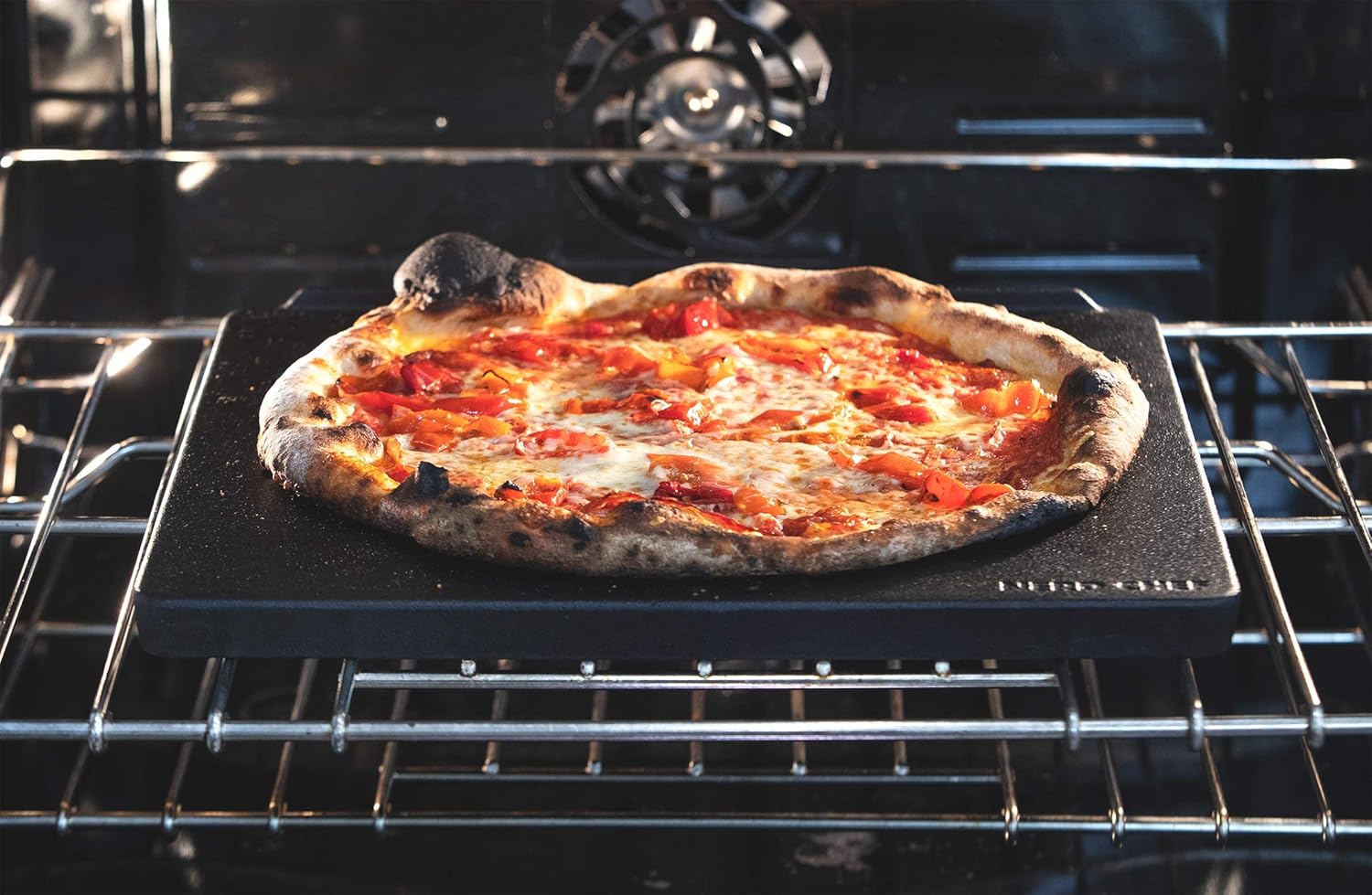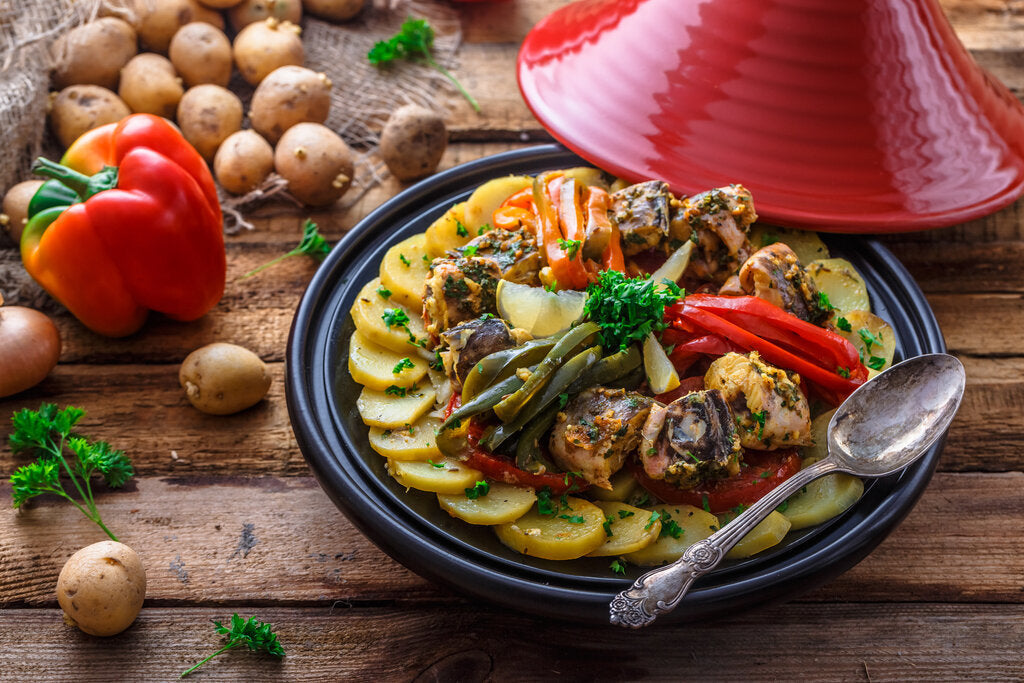For kitchen professionals and avid bakers alike, the quest for the perfect, crispy crust can often feel like a relentless pursuit. Whether you're baking a loaf of artisan bread, crafting a gourmet pizza, or experimenting with pastries, a baking stone can be your secret weapon in achieving that irresistible crunch. A well-chosen baking stone, paired with the right techniques, can transform your culinary creations into crispy-perfection masterpieces.
At the heart of this transformation lies the science behind the baking stone. By absorbing and evenly distributing heat, a baking stone not only ensures beautifully baked goods but also imparts a delightful texture that delights the palate. In this article, we'll dive deep into the magic of baking stones, exploring their types, preheating methods, and safety tips to help you excel in the kitchen.

The Magic of Using a Baking Stone
A baking stone for crispy crust acts as a thermal mass when placed in the oven. Its natural properties enable it to absorb heat and release it slowly, allowing for even cooking and baking. This gradual heat release is instrumental in preventing burning while also enhancing browning - a key element in achieving that desired crispy crust.
Adopting a baking stone in your kitchen can elevate not just the quality of your baked goods, but also enhance your baking experience. It introduces a layer of consistency and professionalism to your culinary creations that can distinguish your work in a bustling kitchen.
Types of Baking Stones
Variety is the spice of life, and the same applies to baking stones. Each type offers its unique advantages, tailored to specific needs and preferences. Whether you're a pizza lover or a pastry enthusiast, knowing the different types of baking stones available can be beneficial.
Cordierite Baking Stone
Renowned for its durability, a cordierite stone is an excellent choice for high-temperature baking. It can withstand extreme heat and provides excellent thermal shock resistance, making it perfect for both pizzas and bread. For a detailed breakdown of this type, check out Types of Baking Stones on Culina Cooks.
Clay Baking Stone
The traditionalist's choice, a clay baking stone is known for its ability to absorb moisture, resulting in a crisp and golden crust. While it might be more fragile than its cordierite counterpart, its performance in creating authentic bread and pizza crusts is unrivaled.
Preheating Your Baking Stone for Success
A critical step in using a baking stone for crispy crust is mastering the art of preheating. To achieve uniformly cooked and textured dishes, ensuring your stone is properly preheated is essential. Preheating mimics the conditions of a stone oven, ensuring an even baking environment.
To start, place the stone in a cold oven to prevent thermal shock and allow it to heat alongside your oven to a high temperaturetypically around 500F (260C). This preheating period varies depending on your oven but generally takes between 45 minutes to an hour. For an in-depth guide on preheating, visit the How to Preheat a Baking Stone blog.
Enhancing Culinary Creations with Baking Stones
Successful chefs and bakers understand that refining techniques with the right tools is key. Leveraging your baking stone for creating crispy crusts not only improves the aesthetics but also the flavor and texture of your dishes. Whether youre baking bread or experimenting with a new pizza sauce recipe, this stone is indispensable.
Combining a well-preheated baking stone with a well-hydrated dough can make a staggering difference in your output. Consider experimenting with hydration levels as you proceed. Need more inspiration for your next bread session? You might enjoy reading about Baking Bread on a Baking Stone.
Essential Baking Stone Safety Tips
Embracing a culinary device such as the baking stone comes with the responsibility of understanding its safe operation. The high heat indicative of a baking stone usage necessitates care and mindfulness in the kitchen.
Preventing Thermal Shock
Always ensure your stone is placed in a cold oven before preheating to prevent cracking due to sudden temperature changes. Gradual temperature adaptation helps maintain the stones integrity.
Handling with Care
Regardless of the stones durability, handling it with care is paramount. Utilize oven mitts or heat-resistant gloves when moving the baking stone, and provide ample support to its surface to prevent accidental falls.
For further safety tips and best practices, explore Baking Stone Safety Tips.

FAQs on Baking Stones for a Crispy Crust
What is the best way to clean a baking stone?
Cleaning a baking stone requires no more than a damp cloth and scraping off any stuck bits between uses. Avoid soap as it can seep into the stone and affect the taste of your foods.
How can I avoid cracking my baking stone?
To prevent cracks, avoid subjecting your stone to extreme temperature changes. Always preheat with the oven, and avoid placing cold foods onto a hot stone.
Can I use my baking stone for other dishes besides bread and pizza?
Certainly! Baking stones are versatile kitchen tools suitable for anything from pastries to roasting vegetables, enhancing the texture and taste of various dishes.
Beyond mastering the technique of using a baking stone for crispy crust, continually gauging your kitchen practices will elevate your cooking prowess. If eager to learn more about using enriched cooking techniques, consider visiting best guide on pizza stones for greater insight.
This article contains affiliate links. We may earn a commission at no extra cost to you.





Leave a comment
This site is protected by hCaptcha and the hCaptcha Privacy Policy and Terms of Service apply.